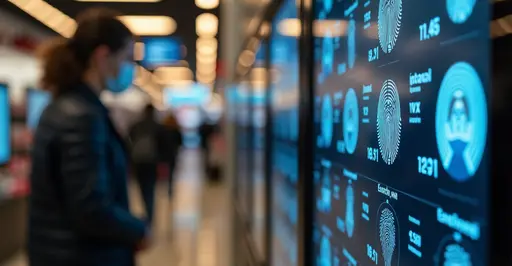
Biometric Payment Systems Transform Retail Experience
Major retail chains have begun implementing biometric payment systems that use facial recognition or fingerprint authentication, allowing customers to checkout without physical cards or devices. This innovation represents one of the most significant shifts in retail technology since the introduction of contactless payments.
How the Technology Works
Shoppers register their biometric data (facial features or fingerprints) through retailer apps, linking them to payment methods. At checkout, cameras or sensors authenticate identity in seconds. Systems like PopID, developed by Cali Group, use advanced algorithms that work even with masks or partial facial coverings.
Current Retail Adoption
In 2025, these systems are appearing in:
- Grocery chains like Kroger and Whole Foods
- Fast-food restaurants including CaliBurger and White Castle
- Department stores such as Macy's and Target
- Convenience stores and gas stations nationwide
Benefits Driving Adoption
Retailers report:
- 30% faster checkout times
- 60% reduction in payment fraud
- Increased customer loyalty program enrollment
- Valuable consumer behavior analytics
Privacy and Security Measures
Companies address concerns through:
- Encrypted biometric data storage
- Optional enrollment with clear opt-out policies
- Compliance with GDPR and CCPA regulations
- Regular third-party security audits
Future Developments
Emerging innovations include palm vein recognition systems being tested by Amazon and Mastercard. Industry analysts predict biometric payments will account for 30% of all retail transactions by 2028.

 Nederlands
Nederlands
 English
English
 French
French
 Deutsch
Deutsch
 Espaniol
Espaniol
 Portugese
Portugese








